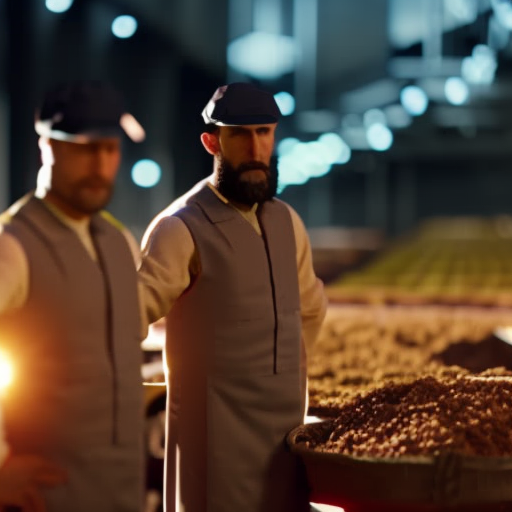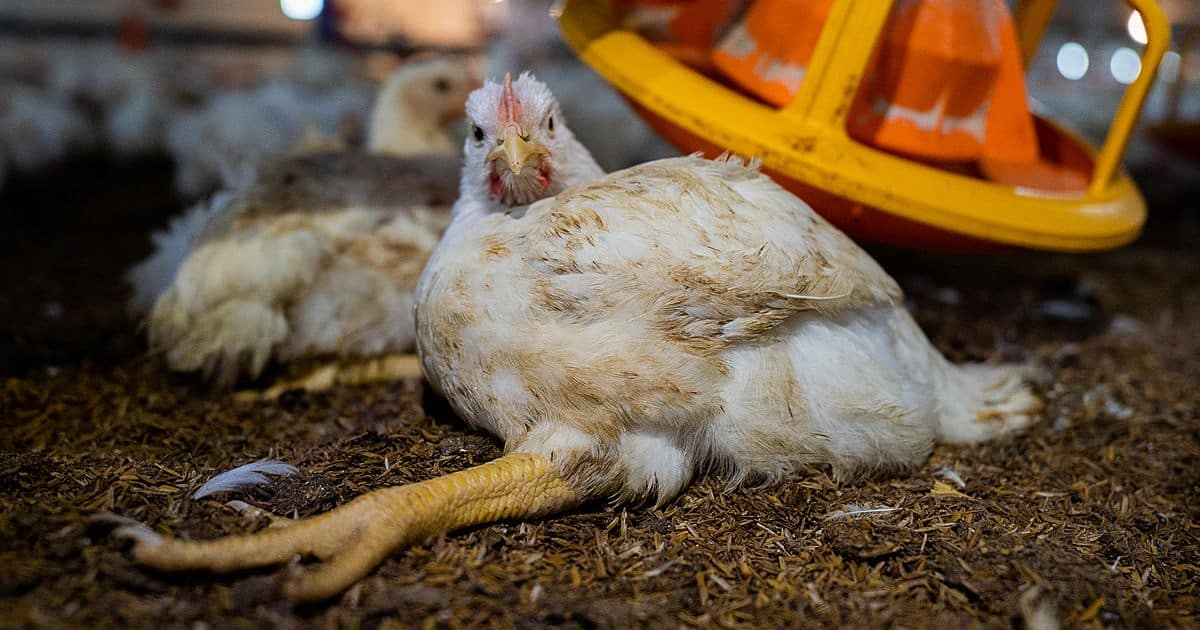

Industrial Agriculture and Its Impact on Sustainable Development Goals (SDGs)
It’s evident that wars and extreme weather from climate change have disrupted farming — affecting animals, food, and prices globally. In response, government-backed intensive agriculture, also known as factory farming, has become a dominant force in the last five decades. It’s a powerful system that produces plentiful and affordable food worldwide…while benefiting large corporations.
Now, as we look ahead to the future of food, we expect industrial farming to keep playing a huge role. That’s where a sustainable intensification approach comes in — it’s all about making more food using less land and water. But globally, intensive farming has a long way to go to be truly sustainable. Here’s what you need to know about what intensive agriculture is, how it harms all of us — and potential alternatives.
What Is Industrial Agriculture and How Does It Work?
Intensive agriculture — often called industrial agriculture — is a farming method focused on producing maximum plant and animal yields within limited land areas. It earns its “intensive” label by employing advanced technology, machinery, seeds and animals, and by using inputs such as water, chemical fertilizers, herbicides, and pesticides in concentrated zones.
Industrial agriculture also relies on practices such as monoculture farming, extensive plowing, heavy chemical usage, abundant irrigation, and mechanization, thereby reducing the need for human labor. When it comes to meat and dairy production however, intensive agriculture is often at odds with animal welfare. Livestock are often crowded, confined, hormonally accelerated, and artificially bred in ways that raise output — and ethical concerns.
This style of farming also often depends on uniform and single-crop resources — such as genetically modified corn and soy, and animals bred for maximum profit. The results are low-cost feed crops, meat, and dairy products, usually distributed through vast supply chains to national and global markets. There, the massive commodity crops like soy and corn are used in animal feed, biofuels, and processed food.
Features of Intensive Agriculture
There are many different features of intensive agriculture. They vary according to whether farmers are producing crops or raising animals.
Concentrated Animal Feeding Operations (CAFOs)
Concentrated animal feeding operations (CAFOs) describe the component of industrial agriculture that involves farmed animals. These tend to be large-scale facilities that hold many individuals in confinement for at least 45 days a year. The U.S. Environmental Protection Agency defines CAFOs on the basis of how many animals they house and the pollutants they produce. A “big CAFO” usually houses a minimum of 1,000 beef cattle, 700 dairy cows, 2,500 large pigs, or 82,000 egg-laying hens. The population of animals in CAFOs throughout the United States has consistently increased over the last many decades. In 1970, the typical dairy farm had only 19 cows, but by 2006, that number had risen to 120. Presently, the largest farms house over 15,000 cattle.
Corporate Consolidation
Corporate consolidation — that is, the increasing concentration of power and control within a few large corporations — has become increasingly common in intensive agriculture. Big companies buy smaller ones, which leads to a smaller number of dominant players in the market. Mergers and acquisitions play a vital role here in driving this consolidation. As a result, a handful of multinational corporations lead across the supply chain, from seed production to food distribution. Nowadays, the four biggest companies in each industry process 73 percent of beef, 67 percent of pork, and 54 percent of chicken.
Deforestation
Intensive agriculture plays a significant role in global deforestation — most famously in regions like the Amazon rainforest. In the Amazon, practices like burning and clear-cutting destroyed nearly a million square kilometers of forest. These actions serve various purposes, primarily to expand animal grazing and monoculture farming for feed crops. Yet deforestation has far-reaching consequences for the planet, as it destroys natural climate solutions like forests, which store carbon rather than releasing it into the atmosphere. Alarmingly, the rate of deforestation is on the rise.
Intensive grazing by farm animals such as cows and sheep can also degrade pasturelands and their soils. That’s where pasture intensification comes into play, which alters grasslands by sowing specific grasses or legumes. There are also other practices that increase the productivity of grazing land, such as the application of fertilizers.
Crop Irrigation
As with pastureland, farmers irrigate crops to encourage plant growth. Farmland irrigation accounts for around 70 percent of total freshwater consumption by people. The practice can have negative impacts, such as contaminating water sources nearby. It can also affect the weather in distant locations, as it boosts water evaporation from land. In 2016, researchers used simulations to show that irrigation in Asia could impact rainfall in Africa.
Rotational Grazing
Rotational grazing is a method of farming that incorporates pastured animals into its production system, primarily using these animals for fertilizer. Under this system, farmers can allow different areas of the farm to “rest” from grazing, enabling vegetation there to grow. While there is evidence that rotational grazing can benefit soils, these systems also reduce biodiversity and require much more land than conventional systems to produce the same amount of food.
Use of Agrochemicals
Agrochemical use is a staple of intensive farming. These products include fertilizers that typically contain nutrients like nitrogen and phosphorus to encourage plant growth. Farmers rely on a mix of synthetic and natural pesticides to kill organisms, such as insects and rodents, that damage crops and hinder yields.
Drain on Land and Water
Industrial agriculture consumes substantial water resources; at least 20-33 percent of all freshwater consumption in the world goes to animal agriculture alone. Meat and dairy production takes up 83 percent of farmland but provides only 18 percent of our
SDGs, Targets, and Indicators
SDGs addressed or connected to the issues highlighted in the article:
- SDG 2: Zero Hunger
- SDG 3: Good Health and Well-being
- SDG 6: Clean Water and Sanitation
- SDG 12: Responsible Consumption and Production
- SDG 13: Climate Action
- SDG 15: Life on Land
Specific targets under those SDGs based on the article’s content:
- Target 2.3: By 2030, double the agricultural productivity and incomes of small-scale food producers, in particular women, indigenous peoples, family farmers, pastoralists, and fishers, including through secure and equal access to land, other productive resources and inputs, knowledge, financial services, markets, and opportunities for value addition and non-farm employment.
- Target 3.9: By 2030, substantially reduce the number of deaths and illnesses from hazardous chemicals and air, water, and soil pollution and contamination.
- Target 6.4: By 2030, substantially increase water-use efficiency across all sectors and ensure sustainable withdrawals and supply of freshwater to address water scarcity and substantially reduce the number of people suffering from water scarcity.
- Target 12.3: By 2030, halve per capita global food waste at the retail and consumer levels and reduce food losses along production and supply chains, including post-harvest losses.
- Target 13.2: Integrate climate change measures into national policies, strategies, and planning.
- Target 15.1: By 2020, ensure the conservation, restoration, and sustainable use of terrestrial and inland freshwater ecosystems and their services, in particular forests, wetlands, mountains, and drylands, in line with obligations under international agreements.
Indicators mentioned or implied in the article that can be used to measure progress towards the identified targets:
- Indicator 2.3.1: Volume of production per labor unit by classes of farming/pastoral/forestry enterprise size.
- Indicator 3.9.1: Mortality rate attributed to household and ambient air pollution.
- Indicator 6.4.1: Change in water-use efficiency over time.
- Indicator 12.3.1: Food loss index.
- Indicator 13.2.1: Number of countries that have communicated the establishment or operationalization of an integrated policy/strategy/plan which increases their ability to adapt to the adverse impacts of climate change and foster climate resilience and low greenhouse gas emissions development in a manner that does not threaten food production.
- Indicator 15.1.1: Forest area as a proportion of total land area.
Table: SDGs, Targets, and Indicators
| SDGs | Targets | Indicators |
|---|---|---|
| SDG 2: Zero Hunger | Target 2.3: By 2030, double the agricultural productivity and incomes of small-scale food producers, in particular women, indigenous peoples, family farmers, pastoralists, and fishers, including through secure and equal access to land, other productive resources and inputs, knowledge, financial services, markets, and opportunities for value addition and non-farm employment. | Indicator 2.3.1: Volume of production per labor unit by classes of farming/pastoral/forestry enterprise size. |
| SDG 3: Good Health and Well-being | Target 3.9: By 2030, substantially reduce the number of deaths and illnesses from hazardous chemicals and air, water, and soil pollution and contamination. | Indicator 3.9.1: Mortality rate attributed to household and ambient air pollution. |
| SDG 6: Clean Water and Sanitation | Target 6.4: By 2030, substantially increase water-use efficiency across all sectors and ensure sustainable withdrawals and supply of freshwater to address water scarcity and substantially reduce the number of people suffering from water scarcity. | Indicator 6.4.1: Change in water-use efficiency over time. |
| SDG 12: Responsible Consumption and Production | Target 12.3: By 2030, halve per capita global food waste at the retail and consumer levels and reduce food losses along production and supply chains, including post-harvest losses. | Indicator 12.3.1: Food loss index. |
| SDG 13: Climate Action | Target 13.2: Integrate climate change measures into national policies, strategies, and planning. | Indicator 13.2.1: Number of countries that have communicated the establishment or operationalization of an integrated policy/strategy/plan which increases their ability to adapt to the adverse impacts of climate change and foster climate resilience and low greenhouse gas emissions development in a manner that does not threaten food production. |
| SDG 15: Life on Land | Target 15.1: By 2020, ensure the conservation, restoration, and sustainable use of terrestrial and inland freshwater ecosystems and their services, in particular forests, wetlands, mountains, and drylands, in line with obligations under international agreements. | Indicator 15.1.1: Forest area as a proportion of total land area. |
Copyright: Dive into this article, curated with care by SDG Investors Inc. Our advanced AI technology searches through vast amounts of data to spotlight how we are all moving forward with the Sustainable Development Goals. While we own the rights to this content, we invite you to share it to help spread knowledge and spark action on the SDGs.
Fuente: sentientmedia.org

Join us, as fellow seekers of change, on a transformative journey at https://sdgtalks.ai/welcome, where you can become a member and actively contribute to shaping a brighter future.





